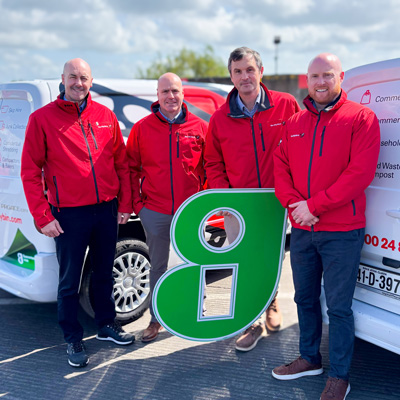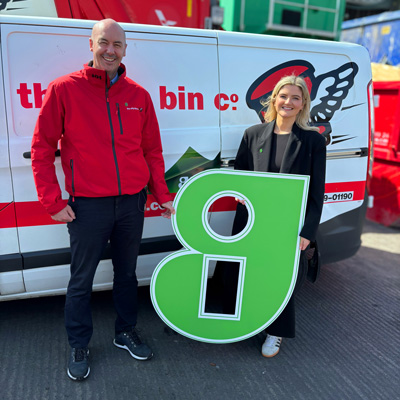
Pre-Christmas Clearout? Keep Your Bin Spark-Free!
Doing a pre-Christmas clearout? Remember to recycle old batteries safely.
As we prepare our homes for the festive season — putting up decorations, making space for guests, and doing that traditional pre-Christmas tidy — we often come across things we haven’t seen since last year: old chargers, tangled cables, and of course… used batteries.
Before any of these small items accidentally end up in your bin, here’s why a quick bit of sorting now can make Christmas safer for everyone.
Why used batteries matter more than you think
During this time of year, waste trucks and recycling facilities deal with much higher volumes of household waste. Even a single used battery — especially lithium ones found in vapes, remotes, lights, and gadgets — can cause a spark if it’s crushed or damaged.
- That spark can lead to a fire.
- It’s a small risk with big consequences, and it’s completely preventable.
- A pre-Christmas clear-out is the perfect moment to collect used batteries before the bin gets busy.
What you might find during your tidy
The usual suspects hiding in drawers, handbags, and kitchen presses include:
- AA & AAA batteries
- Button batteries (from candles, remotes, decorations)
- Old vapes
- Power banks
- Dead chargers and cables
- Old electric toothbrush heads or small grooming devices
All of these contain batteries or electrics and should never go in your household bin.
✅ What to do with used batteries
A few simple steps make a big difference:
- Bring used batteries to any shop or supermarket that sells them — they must take them back for free.
- Store loose batteries in a small tub, jar, or Tupperware until you’re ready to recycle.
- Tape the terminals (the ends) to prevent accidental sparks.
- Add old vapes, cables, and small devices to your recycling drop-off list too — they’re all WEEE items.
A quick trip now means fewer risks later in the month.
🚫 What not to do
Avoid the most common mistakes:
- ❌ Don’t put any batteries in general or recycling bins
- ❌ Don’t leave them loose with metal items like keys, coins, or tools
- ❌ Don’t store large quantities at home for long periods
- ❌ Don’t forget about items that contain hidden batteries
A calm, early clean-out helps keep our bins and crews safe through the busiest collection season of the year.
A safer start to the season
Doing your pre-Christmas clear-out is one of the simplest ways to reduce battery fires in waste trucks — and it only takes a few minutes.
Find your nearest drop-off point at: mywaste.ie
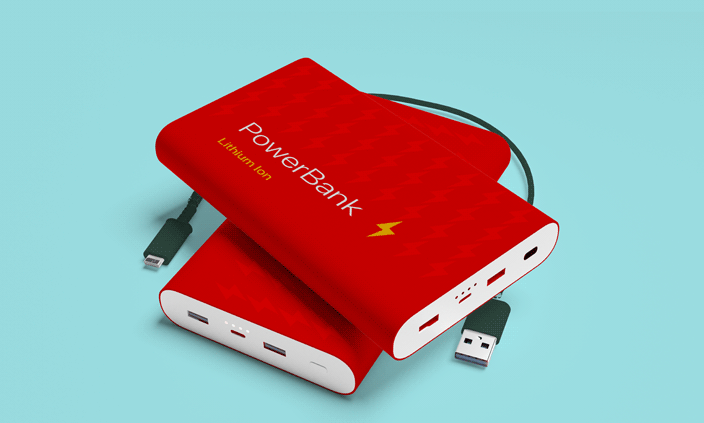
Everyday items can cause bin fires!
We often think of batteries and vapes as the main culprits behind bin fires — but they’re just part of the story. Many ordinary household items can pose serious fire risks when tossed into bins without a second thought.
These items are small, common, and easy to overlook — but once compacted in a waste truck, they can spark, overheat, or even explode.
Common Hidden Fire Risks
-
Power banks & gadgets – contain lithium batteries that can ignite if damaged or crushed.
-
Electrical cables & chargers – can short or spark when frayed or compressed.
-
Mini gas canisters / camping gear – contain pressurised gas that can burst under heat or pressure.
-
Hot ashes – can smoulder for hours and reignite when mixed with waste.
-
Halogen light bulbs & small electronics – need proper WEEE recycling, not household bins.
What to Do
-
Remember – if it’s powered, pressurised, or electrical — it doesn’t belong in your bin.
-
Bring these items to your local civic amenity site or relevant recycling point.
-
Let ashes cool fully and store in a metal container before disposal.
-
When in doubt, check mywaste.ie to find the right recycling option for your area.
What Not to Do
❌ Don’t mix these items into your general waste or recycling bins.
❌ Don’t assume “small = harmless” — these are among the most common fire starters in bins and trucks.
❌ Don’t store damaged electrical items or old chargers with other waste.
Why It Matters
Every year, preventable fires occur in waste trucks and recycling centres because of items like these. A single spark can cause serious damage to equipment, interrupt collection services, and put workers at risk.
By sorting carefully and recycling correctly, you’re keeping your bin, our crews, and your community safe — while helping valuable materials get recovered instead of burned or wasted.
Find Out More
Search any household item at mywaste.ie to see exactly how to dispose of it safely.
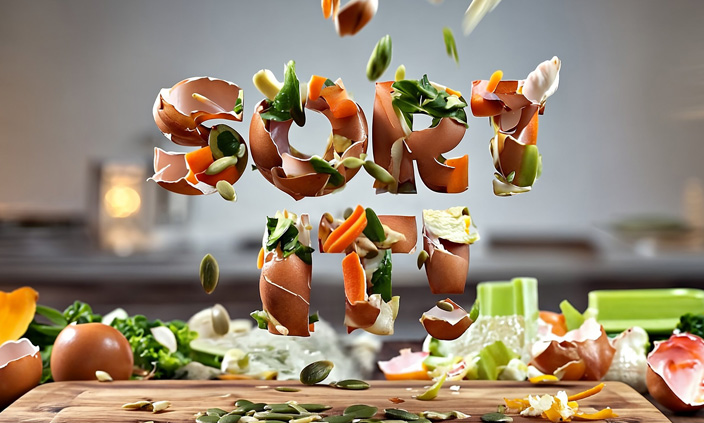
What Goes In Your Brown Bin? Here’s Our ‘Sort It’ Guide.
Curious about what exactly belongs in your brown bin—and why it’s so important? Let’s break it down.
The brown bin is your go-to for organic waste, and recycling it properly offers huge benefits for your home, the environment, and your wallet.
Here’s what you can put in your brown bin:
-
All food waste — both raw and cooked, including meat, fish (and bones), plate scrapings, bread, cakes, dairy products, eggshells, fruit and vegetable peelings, and out-of-date food (just remove any packaging first)
-
Coffee grounds & tea bags, as well as coffee filters, provided they’re paper — but plastic-containing filters should go in general waste
-
Food-soiled paper items — like napkins, paper towels, food-stained sections of pizza boxes
-
Light garden waste — grass clippings, small twigs, cut flowers, and plant trimmings
-
Certified compostable packaging — such as compostable cups, bowls, and cutlery (look for the EN 13432 / ‘Seedling’ certification)
Why Recycle Your Food Waste?
-
Environmental Impact:
Diverting food waste from landfill drops methane emissions and helps protect ecosystems. Composting alongside anaerobic digestion turns waste into valuable compost and even green energy -
Circular Economy Benefits:
By recycling organic waste, you help create compost essential for farming, landscaping, community gardens — closing the loop on a circular, sustainable economy -
Compliance & Accessibility:
Since January 2024, every household in Ireland is entitled to a brown bin for food and garden waste. This change makes participation easier and helps meet national recycling targets -
Cost Savings:
Less general waste means lower disposal costs—your brown bin helps keep black bin charges down. Also, forming good habits like separating waste can reduce overall waste production -
Avoid Contamination:
Over 50% of household food waste in Ireland ends up in the wrong bin. Recycling correctly ensures it goes where it belongs—helping cut contamination and improving recycling efficiency
Quick Tips: Make the Most of Your Brown Bin
-
Set up a mini-system at home:
Use three separate bins inside (food, recycling, general waste). Keep the brown bin handy; make general waste harder to reach to encourage recycling -
Use labels and visuals:
Label each bin with pictures or simple words to avoid confusion—even early mornings will go smoothly -
Create ownership and awareness:
Assign someone to manage the bins—this fosters care, accountability, and minimises contamination -
Track your progress:
Keep a visual log of how much you’re recycling—use tools like BinDex (CityBin’s recycling stat report) to stay motivated -
Clean & maintain your bin:
Rinse occasionally with vinegar or newspaper liners to reduce odours and keep pests away.
Ready to Use Your Brown Bin?
Step 1: Collect food scraps, coffee grounds, soiled paper, small garden cuttings — just avoid packaging, plastics, and oils.
Step 2: Confirm everything is compostable—look for EN 13432 certification.
Step 3: Dump everything into your brown bin and keep it well-organised.
Step 4: Watch for collection day, and take pride in making a positive impact!
By adopting these simple practices, you’re not just maintaining a cleaner kitchen — you’re part of a greener solution that benefits your community, environment, and pocket.
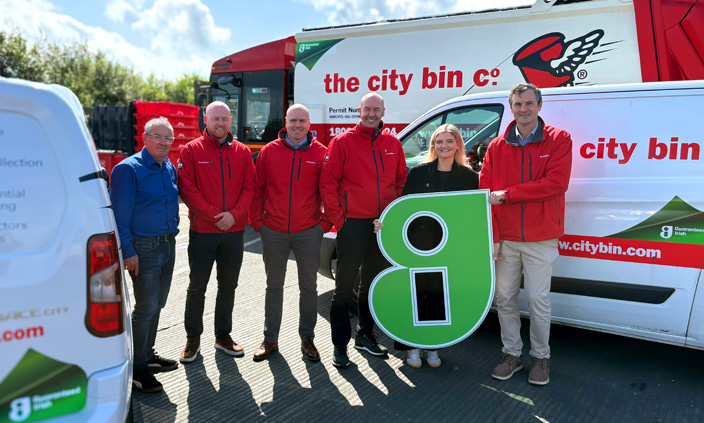
Guaranteed Irish Visit to The City Bin Co. Recycling Centre in Oranmore
We were delighted to welcome Melissa from Guaranteed Irish to our Recycling Centre in Oranmore this week. Her visit gave us a great opportunity to showcase the significant improvements we’ve made at the facility over the past year.
The Oranmore Recycling Centre has been redeveloped, with upgrades that allow us to process more materials on-site than ever before. These enhancements mean that cardboard, brown bin materials, and construction & demolition waste can now be handled directly at the centre, cutting down on external transport and improving recycling rates. In fact, the site now processes over 25 tonnes of cardboard every week – material that might otherwise have gone to waste.
The redevelopment has also been about making recycling easier and more accessible for the local community. New services such as Wood, Paint, and Mattress recycling have been added, giving households and businesses even more convenient options to recycle responsibly.
Melissa saw first-hand how these improvements are not only helping the environment but also supporting the wider community. By processing more materials locally, we’re reducing carbon emissions, improving resource recovery, and creating a facility that Galway residents can rely on for everyday recycling needs.
As proud members of Guaranteed Irish, we share their values of supporting local communities, creating jobs, and driving sustainable practices. The visit was a fantastic opportunity to demonstrate how investment in local facilities like Oranmore can deliver real environmental and community benefits.
And remember, when you see the Guaranteed Irish ‘G’ on our website, mobile apps, trucks, bins, and other assets, it’s your sign that The City Bin Co. is a company rooted in Ireland, supporting Irish jobs, and committed to doing business the right way.
We’d like to thank Melissa and the Guaranteed Irish team for their continued support, and we look forward to working together as we build on our mission to make recycling simpler, smarter, and more sustainable for everyone.
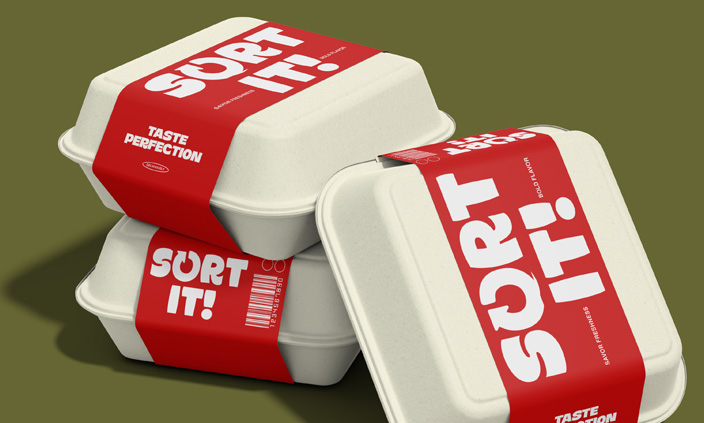
Recycling Food Packaging: Your Complete Guide
Recycling your food packaging shouldn’t feel like a chore – especially with the right know-how. Here’s how to make your household more eco‑friendly the easy way, supporting our broader “Sort It” initiative and contributing to smarter waste habits.
What Ireland’s Recycling Targets Show Us
Ireland recycled just 59% of packaging in 2023, falling short of the 65% target for 2025. That gap underlines how much room we have to improve household recycling, particularly when we pay attention to what goes into each bin. EPA Ireland
Know What’s Actually Recyclable
-
Most food packaging is recyclable — but not everything. Avoid items made from Styrofoam, polystyrene, or “number 7” mixed plastics.
-
Packaging choices matter: clear/light-blue PET bottles and natural HDPE containers are more valuable to recycling systems. If you’re designing packaging, label aluminium well and steer clear of complex, non-removable materials. repak.ie
Quick Recycling Wins Every Week
-
Rinse and empty packaging before recycling. This small step keeps bins cleaner and lowers contamination risk. theguardian.com+9How2Recycle+9realsimple.com+9
-
Keep recyclables loose – no bags. Bags jam machines and can cause entire batches to be discarded.
-
Don’t bin the lids – screw them back on. These stay attached during processing and recycle more efficiently with their containers. How2Recycle
In Summary
-
Know what items are recyclable in your local system.
-
Rinse, keep recyclables loose, and replace lids.
-
Support initiatives like DRS and keep an eye on legislation that promotes better recycling outcomes.
Together, these steps can help Ireland meet its targets – and make your “Sort It” pledge something you’re proud of.
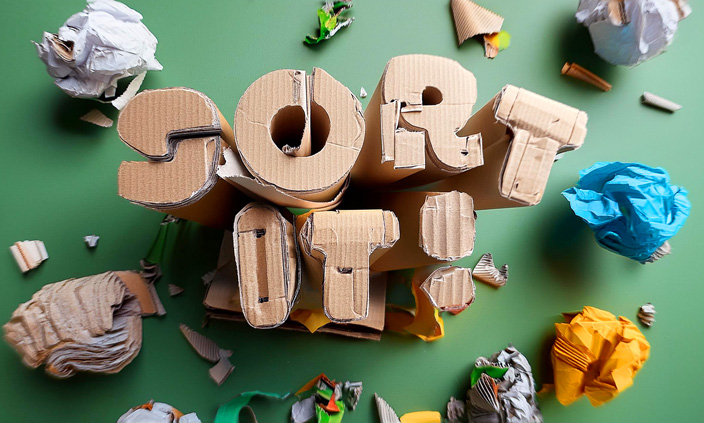
Sort It! – How Segregated Bins Can Cut Your Waste Costs
Waste management in the workplace isn’t just about being green — it’s about saving money too.
One of the easiest ways to reduce your waste bills is bin segregation: making sure different waste streams are separated at source. When you “sort it” in the office, warehouse, café, or showroom, you’re cutting contamination, reducing landfill charges, and maximising recycling rebates.
Here are some practical tips to get started:
1. Know Your Waste Streams
In Ireland, most commercial premises will benefit from separating into:
-
General Waste (black or grey bin)
-
Mixed Recycling (green bin)
-
Food Waste (brown bin)
Some workplaces might also need dedicated bins for glass, cardboard, or confidential shredding. Check our ‘what can go in your bin’ guide — and make sure everyone knows what goes where.
2. Position Bins Where the Waste Happens
People are more likely to sort correctly when it’s easy.
-
Place bins in kitchens, staff rooms, print stations, and near desks.
-
For retail or hospitality, put them back-of-house and at customer points.
Avoid the “single lonely bin” in the corner — it just becomes a dumping ground for everything.
3. Use Clear Labelling & Colour Coding
Labels with photos of what goes in each bin work best — especially for new staff or visitors.
Stick to standard Irish colours where possible:
-
Black/Grey for General Waste
-
Green for Recycling
-
Brown for Food Waste
The less people have to think, the better the segregation will be.
4. Train Your Team (and Keep It Fresh)
A short briefing or toolbox talk can make a big difference.
-
Explain why segregation matters (lower costs, better for the planet, avoids fines).
-
Do quick “bin audits” every few months and share the results with the team.
-
Celebrate improvements — a simple email or shout-out works wonders.
5. Monitor Your Costs & Volumes
We can supply reports showing weight per waste stream.
-
If your general waste volumes drop, you’ll see the savings in your bill.
-
More recycling = fewer landfill charges.
Some companies have cut their waste costs by 20–40% just by improving segregation.
The Bottom Line:
Segregated bins aren’t just good for the environment — they’re good for your budget. By making it easy for staff and customers to sort correctly, you’ll reduce disposal costs, improve recycling rates, and help Ireland meet its waste targets.
#SortItCampaign #Sustainability #OfficeRecycling #EcoFriendly #GreenOffice #WasteManagement
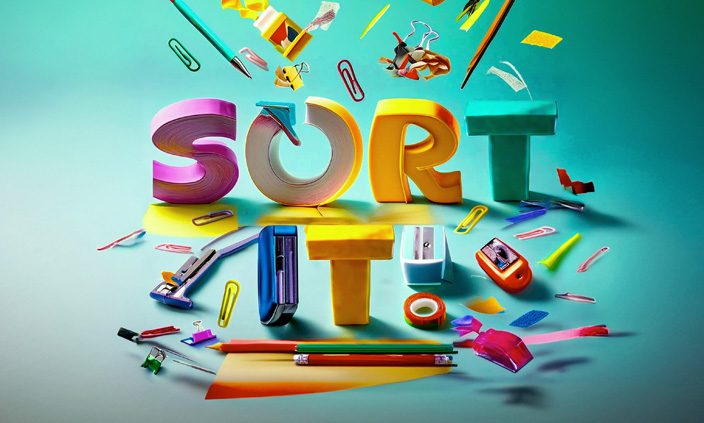
Let’s Work Together & Sort It! at Work
As the focus on sustainability continues to grow, offices have become key areas where significant environmental impact can be made. Implementing sustainable practices within the workplace not only helps the environment but can also create a more positive and engaging work culture. In this blog post, we’ll share some handy hints to help improve recycling efforts and promote sustainability among workers in your office.
-
Set Up Clearly Labelled Recycling Stations
One of the simplest ways to encourage recycling in the office is by setting up clearly labelled recycling stations. Ensure that bins for paper, plastics, glass, and general waste are easily accessible and clearly marked. This reduces confusion and makes it easier for employees to dispose of their waste correctly.
Tip: Place recycling stations in high-traffic areas such as the kitchen, near printers, and in break rooms. Include posters or guides above the bins to remind staff of what can and cannot be recycled.
-
Encourage Paperless Practices
The digital age offers countless opportunities to reduce paper use in the office. Encourage employees to embrace paperless practices by using digital documents, emails, and cloud storage instead of printing.
Tip: Set printers to double-sided printing by default and encourage staff to think before they print. Offer training sessions on digital tools that can help reduce paper usage, such as PDF editing software or cloud collaboration platforms.
-
Reuse Office Supplies
Before purchasing new office supplies, consider whether existing items can be reused or repurposed. Items like file folders, binders, and envelopes can often be used multiple times before they need to be replaced.
Tip: Create a designated area for reusable supplies where employees can drop off or pick up items they no longer need. This can reduce the demand for new supplies and minimize waste.
-
Promote the Use of Reusable Items
Encourage employees to use reusable items such as coffee mugs, water bottles, and lunch containers. This reduces the amount of single-use plastic and paper waste generated in the office.
Tip: Provide reusable items branded with the company logo as part of an eco-friendly welcome pack for new employees. Consider setting up a dishwasher in the office kitchen to make it easier for staff to clean and reuse their items.
-
Organise Office Recycling Challenges
Make recycling fun by organizing office-wide recycling challenges. Set goals for reducing waste or increasing recycling rates, and offer rewards for teams or individuals who achieve the best results.
Tip: Track the office’s recycling progress and share updates regularly. Consider rewarding the winning team with a lunch outing, extra break time, or a donation to an environmental charity in their name.
-
Educate and Engage Employees
Education is key to improving sustainability in the workplace. Provide regular training sessions or workshops on recycling and sustainable practices. Share tips and success stories in company newsletters or on the intranet.
Tip: Invite guest speakers from local recycling organizations or environmental groups to give presentations or hold Q&A sessions with employees. This can provide valuable insights and inspire further action.
-
Implement a Green Office Program
Consider implementing a formal green office program that includes policies and practices focused on sustainability. This can range from simple initiatives like energy-saving measures to comprehensive programs that address all aspects of office operations.
Tip: Establish a “Green Team” of volunteers who are passionate about sustainability. They can help drive the program, monitor progress, and come up with new ideas to improve the office’s environmental impact.
-
Reduce Energy Consumption
Encouraging energy-saving habits is another important aspect of sustainability. Simple actions like turning off lights when not in use, using energy-efficient appliances, and setting computers to sleep mode can make a big difference.
Tip: Install motion sensors for office lighting in less frequently used areas such as storage rooms and bathrooms. Encourage staff to unplug chargers and electronics when they’re not in use to avoid phantom energy drain.
Conclusion
Improving sustainability in the office is not only beneficial for the environment but also for the overall well-being and morale of employees. By implementing these handy hints, you can create a more eco-friendly workplace that encourages recycling and sustainable practices among workers. Let’s work together to make our offices greener and more responsible places to work.
#SortItCampaign #Sustainability #OfficeRecycling #EcoFriendly #GreenOffice #WasteManagement
Encouraging sustainable habits in the workplace is a collective effort. Start small, but think big—every action counts toward a more sustainable future!
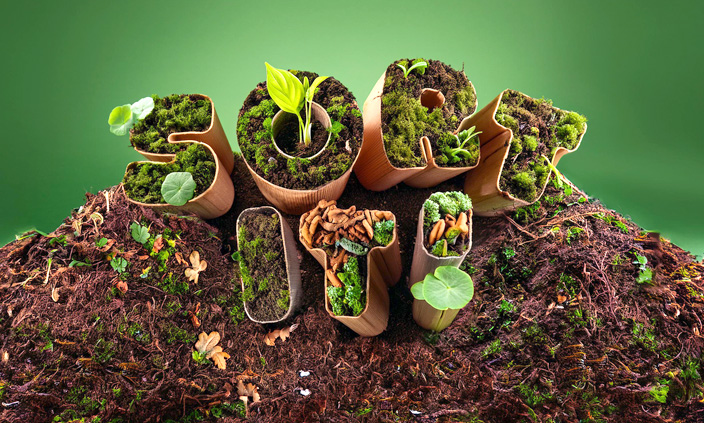
Let’s Sort It! & Compost Our Food Waste
Food waste is one of the most significant environmental challenges we face today. In Ireland, approximately 750,000 tonnes of food waste are generated each year (Home). Composting is an effective way to manage this waste, turning it into valuable resources instead of letting it end up in landfills. In this blog post, we’ll explore how composting food waste contributes to the circular economy and helps reduce the amount of food waste going to landfill.
Contributing to the Circular Economy
A circular economy is an economic system aimed at minimizing waste and making the most of resources. By composting food waste, we can transform organic materials into nutrient-rich compost, which can then be used to improve soil health and support sustainable agriculture.
Benefits of Composting to the Circular Economy:
- Resource Efficiency: Composting turns waste into a valuable resource, reducing the need for chemical fertilizers and improving soil fertility.
- Sustainable Agriculture: The compost produced from food waste can be used in gardens, farms, and public green spaces, supporting the growth of healthy plants and crops.
- Waste Reduction: Composting reduces the volume of waste that needs to be processed and disposed of, creating a closed-loop system where organic waste is continually recycled and reused.
In Ireland, approximately 590,000 tonnes of organic waste, including food waste, were accepted for treatment at composting and anaerobic digestion facilities in 2021 (Home). This significant volume of waste being composted demonstrates Ireland’s commitment to embracing circular economy principles.
Reducing the Amount of Food Waste Going to Landfill
Sending food waste to landfills has severe environmental consequences. When organic waste decomposes in a landfill, it produces methane, a potent greenhouse gas that contributes to climate change. Additionally, landfills are a significant source of pollution and can have detrimental effects on surrounding ecosystems.
Impact of Reducing Food Waste in Landfills:
- Lower Greenhouse Gas Emissions: Composting food waste instead of sending it to landfills reduces methane emissions, helping to mitigate climate change.
- Landfill Diversion: By composting food waste, we can significantly reduce the amount of waste that ends up in landfills, extending the lifespan of existing landfill sites and reducing the need for new ones.
- Pollution Prevention: Landfills can leach harmful substances into the soil and water, leading to environmental degradation. Reducing the amount of waste sent to landfills helps minimize this risk.
Ireland has made strides in managing food waste, but there is still much work to be done. By increasing composting rates and reducing food waste sent to landfills, Ireland can continue to make progress toward its environmental goals.
Make the Most of Your Brown Compost Bin!
Your brown compost bin is an easy and efficient way to dispose of organic waste while helping the environment. Instead of worrying about setting up a compost bin at home, simply place your food scraps and organic waste directly into the brown bin. This includes fruit and vegetable peels, coffee grounds, eggshells, and even yard waste. By doing this, you ensure that your waste is turned into nutrient-rich compost that can benefit gardens and green spaces. Plus, it helps reduce landfill waste and cuts down on odours. So next time you’re about to toss out your food waste, remember to use your brown bin—it’s a small step that makes a big difference!
Conclusion
Composting food waste is a powerful tool in the fight against environmental degradation. By contributing to the circular economy and reducing the amount of food waste going to landfill, composting helps create a more sustainable and resilient ecosystem. Ireland’s efforts in composting are commendable, but there is always room for improvement. By participating in composting, you can play a vital role in supporting these efforts and making a positive impact on the environment.
#SortItCampaign #Composting #CircularEconomy #Sustainability #WasteReduction #EcoFriendly #SaveThePlanet
Start composting today and be part of the solution to reducing food waste and promoting sustainability. Every small effort counts in making a big difference!
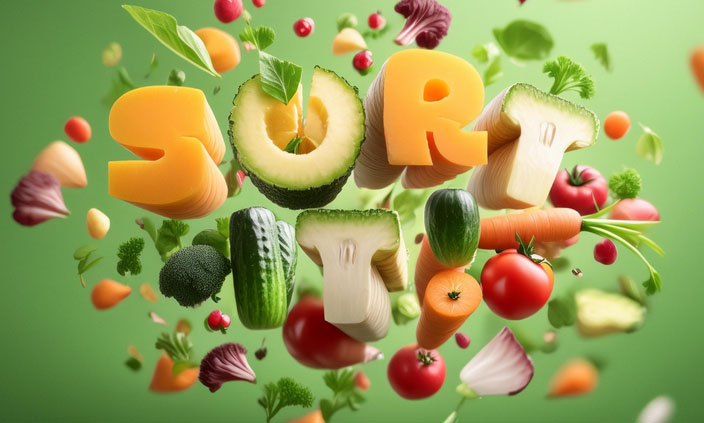
Food Waste? Let’s Sort It! Properly
Proper waste segregation is a critical aspect of effective waste management. One of the most significant components of this process is the separation of food waste. In this blog post, we will explore how separating food waste can (a) reduce contamination of recyclables and (b) recover food waste for composting, contributing to a more sustainable environment.
Reducing Contamination of Recyclables
When food waste is mixed with recyclables, it can contaminate the entire batch. This contamination makes it difficult, if not impossible, to recycle these materials effectively. Contaminated recyclables often end up in landfills, defeating the purpose of recycling programs.
Impact of Contamination:
- Quality Reduction: Food residues can degrade the quality of recyclable materials, making them less suitable for processing.
- Increased Costs: Contaminated recyclables require additional sorting and cleaning, increasing the costs for recycling facilities.
- Landfill Overflow: Contaminated recyclables often end up in landfills, contributing to waste management challenges.
Recovering Food Waste for Composting
Separating food waste not only reduces contamination but also allows for the recovery of organic materials for composting. Composting is an environmentally friendly way to manage food waste, turning it into valuable compost that can enrich soil and support agriculture.
Benefits of Composting:
- Soil Health: Compost adds essential nutrients to the soil, improving its fertility and structure.
- Reduced Greenhouse Gases: Composting organic waste reduces methane emissions from landfills, a potent greenhouse gas.
- Resource Conservation: Using compost reduces the need for chemical fertilizers, conserving natural resources.
In Ireland, approximately 750,000 tonnes of food waste were generated in 2022. Composting facilities accepted around 590,000 tonnes of organic waste for treatment, showcasing the potential of composting in managing food waste effectively.
Steps to Proper Food Waste Segregation
- Set Up Separate Bins: Use dedicated bins for food waste, recyclables, and general waste.
- Educate Household Members: Ensure everyone in the household understands the importance of separating food waste.
- Use Compostable Bags: Line your food waste bin with compostable bags to make the process cleaner and easier.
- Compost at Home: If possible, set up a composting system at home to manage your food waste directly.
Separating food waste is a simple yet powerful step towards improving waste management. By reducing contamination of recyclables and recovering valuable organic material for composting, we can contribute to a more sustainable environment. Ireland’s progress in recycling and composting highlights the importance of continued efforts in waste segregation. Let’s all play our part in the ‘Sort It’ campaign and make a positive impact on our planet.
#SortItCampaign #FoodWaste #Composting #Recycling #Sustainability #EcoFriendly #WasteManagement #SaveThePlanet
By participating in proper waste segregation, you are not only helping to reduce landfill waste but also supporting a circular economy. Together, we can make a significant difference.

Galway United Signs Up for Sustainability with The City Bin Co.
—and this season, we’re taking that quite literally! We’re delighted to announce that we are now Galway United’s official Sustainability Partner, helping to make Eamonn Deacy Park a cleaner, greener place for fans and players alike.
Three Up Front: Recycling, Waste, and Sustainability
As part of this partnership, we’ll be providing waste management services for all stadium events, ensuring that every matchday at Eamonn Deacy Park is as environmentally friendly as possible. We’ve also designed brand-new signage to help supporters Sort It! and use the correct bin with ease.
Each waste station now features clear, fan-friendly signage showing what items go into which bin, making recycling a simple part of the matchday experience. And, of course, the bins themselves are placed directly in front of their relevant information, so there’s no confusion—just clean, efficient waste sorting.
We’ll also be tracking recycling rates and waste levels throughout the season, aiming for zero contamination in our recycling bins. Later in the year, we’ll even introduce carbon emissions tracking, giving a full picture of the environmental impact.
Galway United Aiming for the Top of the Recycling League
Football is all about stats, and we’ll be keeping an eye on the numbers here too! Each home match programme will include updates on how the team (that’s you, the fans!) is doing in keeping waste sorted correctly.
We want Galway United to top the table in recycling rates across the league—and with your help, we can make it happen.
Fans Can Make the Difference
This initiative isn’t just about bins—it’s about building a culture of sustainability. We’ll be sharing guest posts on Galway United’s social media throughout the season, providing tips and insights on waste management.
As the season progresses, we’ll introduce competitions and challenges, with prizes for fans who get involved in making Eamonn Deacy Park Ireland’s most sustainable stadium. We’ll even compare our recycling rates with other clubs to see how Galway United stacks up against the competition!
And while we don’t have volunteers in place yet, we hope to trial a matchday stewarding system later in the year, helping supporters make the right recycling choices.
Coming Soon: An Exclusive Offer for Galway United Fans
For fans who want to bring their sustainability efforts home, we’ll soon be launching a household waste collection referral scheme. Stay tuned for details on how you can switch to The City Bin Co. and support your club while keeping your waste in check.
For now, let’s stay onside and focus on sorting it right on matchdays
